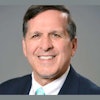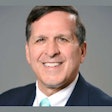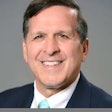
Between 2015 and 2019, more than 2.7 million opioids were prescribed by dentists and oral and maxillofacial surgeons in the U.S. However, fewer opioids were prescribed in 2019 than in 2015, according to new research.
The study, which was presented at the annual meeting of the American Association for Dental, Oral, and Craniofacial Research (AADOCR) and the Canadian Association for Dental Research, aimed to identify "high prescribers," clinicians who issue a large number of prescriptions for pain medication, by defining trajectories of opioid prescribing among dentists and oral and maxillofacial surgeons, according to an AADOCR press release dated March 16.
Researchers from the University of Pittsburgh used the IQVIA longitudinal prescription dataset to identify actively prescribing dentists and surgeons, which included clinicians who wrote 20 prescriptions or more of any medication between 2015 and 2019. Group-based trajectory models identified opioid prescribing trajectories based on annual prescribing rates. Statistical analysis assessments identified significant differences in characteristics by trajectory group.
From 2015 to 2019, 199,145 dentists and oral and maxillofacial surgeons prescribed more than 2.7 million opioids. Models identified eight groups of prescribers.
Group one consisted of 14% of prescribers. Less than 1% of all their prescriptions were opioids. Groups two, three, and four, which in total consisted of about 46% of prescribers, wrote opioid prescriptions at low rates. In 2015, group two prescribed at a rate of about 5.5%, but the percentage fell to 1.5% in 2019. In group three, clinicians prescribed at a rate of 12.5% in 2015 and 4.4% in 2019. In group four, they prescribed at a rate of 13% in 2015 and 11.9% in 2019, according to the release.
Group five, which accounted for 7.9% of prescribers, decreased prescribing by 82.7%. These clinicians prescribed at a rate of 29.4% in 2015 and 5% in 2019. Groups six and seven, which consisted of about 28% of prescribers, prescribed opioids at moderate rates (2015 totaled 28.7% and 39.2%, respectively, while 2019 totaled 18.1% and 28.8%, respectively), according to the release.
The smallest group of prescribers at 3.5% comprised the eighth group. This group consistently prescribed at high rates. In 2015, they prescribed 54.6% and 44.7% in 2019. Within the high-prescribing group, four trajectories were identified. Of these, three groups did not change their prescribing rates, while one group, which consisted of 7.5% of the high prescribers, rapidly declined their prescription of opioids.
Compared with a combination of the three groups of high prescribers, the declining group had more dentists (85.4% versus 0.8%) and fewer surgeons (13% versus 18.4%). At baseline, declining prescribers had more Medicaid patients (2.5% versus 1%) and a higher opioid prescribing rate (95.5 versus 91.6 prescriptions per provider per 100 patients (p < 0.001 for all), according to the presentation.




















